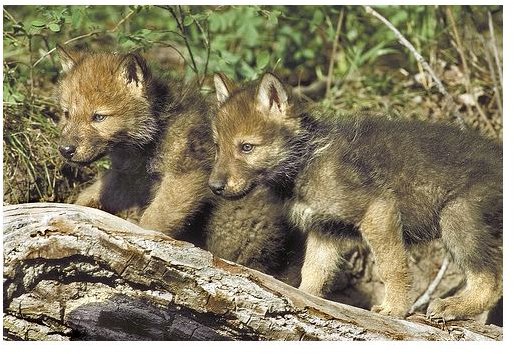A Plethora of Timber Wolf Facts: Description, Behavior, Diet & More
The Timber Wolf

The timber wolf (Canis lupus) is best known as the gray wolf. These beautiful wolves belong in the Canine family and are ancestors of domesticated dogs. The DNA makeup of both animals is almost identical. In earlier days, they could be found living throughout most of the United States. Today, their numbers have decreased and their range has been reduced to Alaska, Idaho, Montana, Wyoming, Minnesota, Wisconsin and Michigan. They have begun to migrate from Idaho to northeastern Oregon and are believed to spread to Washington. They can also be found living in Canada, Mexico and Eurasia. They are highly adaptable and can live in a variety of habitats.
Description
The timber wolf looks similar to a German Shepherd, but is taller in size. The body length, from the nose to the tail tip, is 4 1/2 to 6 1/2 feet, shoulder height is 26 to 32 inches and weight is 60 to 145 pounds. Males are typically larger than females, and those that live up north are usually bigger than the wolves who live further south. The coat color is normally a mix of gray and brown, but other colors are not unusual, including solid white.
Behavior
Timber wolves are social creatures with one another. Most live in packs that normally consist of four to nine members. They are territorial animals, and will defend their territories (which can range from 50 to over 1,000 square miles) with scent markings, howling and direct attacks. They avoid people and there are no documented cases of a human being killed by a healthy timber wolf in the wild.
Diet
Timber wolves are meat eaters. They prefer large, hoofed mammals such as moose, bison, caribou, musk-oxen, elk and deer, but will also eat smaller mammals such as beavers, rabbits and rodents. Packs normally take down large prey and lone wolves usually go after smaller prey. When attacking large prey, they normally go after those that are old, weak and sick to help prevent being injured by the animal’s hooves. They are also known to steal prey from other animals and eat decaying flesh. Adults can consume up to 20 pounds of food at a time, including all parts of the carcass except for major bones. If necessary, a wolf can go weeks without eating.
Reproduction

Males and females reach sexual maturity at two to three years of age. When a female chooses her mate, she will normally stay with him for life. Breeding occurs once a year between January and March. The gestation period lasts about two months, and the average litter size is four to seven pups. The pups weigh about a pound at birth, and are unable to see or hear. The mother nurses the babies for three to four weeks, while the father brings her food to eat. The pups are then able to eat solid food, which is first introduced through regurgitation. They are ready to hunt around 10 months of age, and may leave the pack when sexually mature.
More Information
The following are more interesting timber wolf facts:
-
Their sense of smell is 100 times stronger than ours.
-
Wolves do not howl at the moon. They howl to warn strangers away, to locate one another and sometimes for no apparent reason. If you were to howl, a nearby wolf will most likely answer back with a howl.
-
They will often sacrifice their life to protect a family member.
-
Timber wolves can travel great distances at a steady trot, up to 40 miles without resting. They can also run up to 35 miles per hour over short distances.
-
There were once around 2 million timber wolves worldwide. Today, about 200,000 exist (7-11,000 in Alaska and about 5,000 in the lower 48 states). They are listed as endangered.
-
The lifespan for a timber wolf in the wild is 8-13 years.
References
Defenders of Wildlife: https://www.defenders.org/wildlife_and_habitat/wildlife/wolf,_gray.php
National Wildlife Federation: https://www.nwf.org/Wildlife/Wildlife-Library/Mammals/Gray-Wolf.aspx
Macalester College: https://www.macalester.edu/~montgomery/graywolf.html
Kids Planet: https://www.kidsplanet.org/tt/wolf/intro/faq.pdf
Photos: